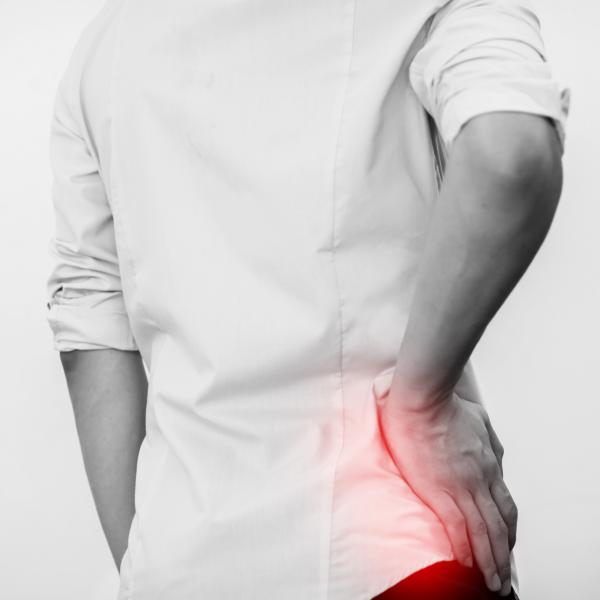
By Angela Bender and Cori Cameron
The hip is one of the strongest, most secure, and stable joints in the body, but it is not indestructible. While the hip bone may look like one bone, it is made up of three bones that are completely fused – ilium, pubis, and ischium. Whether we're walking, running, bending or sitting, the hip plays a critical role. When injured, it can cause every day tasks to be painful and difficult. As we get older, the risk of hip injury increase due to many different factors. Knowing more about common causes and conditions and ways prevent hip injuries will give us a better chance to avoid some of the risks of injury.
Common Causes
The hip bone has a cushion of cartilage that helps to prevent friction when the hip bone moves. Even though the hip bone is durable, arthritis, injuries and other problems can all cause hip pain.
- Overuse Injuries – With age and use, the cartilage can wear down and the muscles and tendons can become damaged.
- Sudden (Acute) Injuries – During a fall or other injury, the hip bone can be fractured.
- Pinched Nerves – Tightness in the outer hip muscles can place pressure on the nerves.
Common Conditions
Hip pain can be caused by any one of these common conditions:
- Osteoarthritis – The most common disease affecting the hip is osteoarthritis. The cartilage in the hip joint gradually wears away, becoming frayed and rough, and the protective joint space between the bones decreases resulting in bone rubbing on bone.
- Other Forms of Inflammatory Arthritis – Rheumatoid arthritis, ankylosing spondylitis, systemic lupus erythematosus, psoriatic arthritis are all also common types of arthritis that cause hip pain.
- Bone Fracture – A hip fracture is a break in the upper quarter of the femur (thigh) bone. Hip fractures most commonly occur from a fall or from a direct blow to the side of the hip.
- Developmental Conditions – Usually present from birth, developmental conditions occur when there is an abnormality either in the shape of the head of the femur, the shape of the acetabulum or the supporting structures around them (e.g. dysplasia of the hip).
Injury Prevention
Paula Savino, PT, MPT, and Clinical Case Manager, gives us some tips to help prevent and rehabilitate hip injuries:
Stay Flexible – Make sure to stretch your quads, hamstrings, hip adductor and hip flexor muscles daily. Hold those stretches for at least 30 seconds and repeat 2-3 times.
Keep Your Legs Strong – Focus on all four planes of the hip. The hip can move in multiple directions so strengthen your hip abductors, adductors, flexors and extensors. Try some squats, lunges and lateral walks with resistance.
Avoid Overtraining – Make sure you vary your exercises and don’t always do the same thing. If you have pain after exercising, stop the activity, rest, ice and elevate your leg.
Rehabilitation
If you have pain in your hip that isn't going away, rehabilitation is a great step to take to improve your functionality. During hip rehabilitation:
Be Prepared to Re-Educate Your Muscles – Focus is on strong gluteal, hip abductor and hip adductor muscles. This will help ensure good hip alignment with daily activities.
Be Balanced – Work on dynamic balance exercises to improve your proprioception and ability to stay upright.
Always Think Proper Posture – Maintaining your center of gravity over your feet will reduce undue stress and strain on your hip.
Be Strong through Your Core – Your core provides for better overall stability of the hip by providing a foundation for proper movement patterns.
- Wear Proper Footwear – It is important to provide a good foundation for the hip.
When weighing your treatment options for hip pain and injuries, consider physical therapy. Physical therapy offers a wide variety of treatment options including strengthening, stretching, and sustainable home exercise programs. Stop in or call any ATI location for a complimentary injury screen or to learn more about how physical therapy can help you overcome your hip pain. Click here to schedule a complimentary injury screen.
Get hip with ATI!
